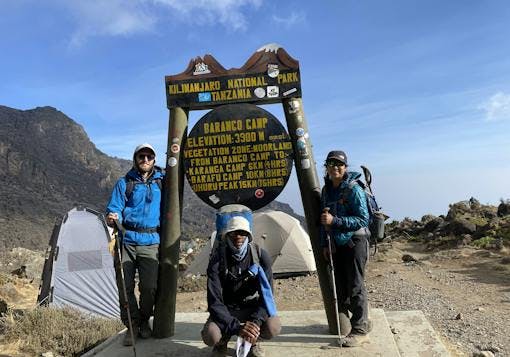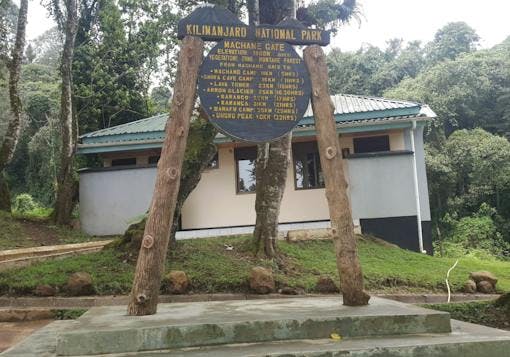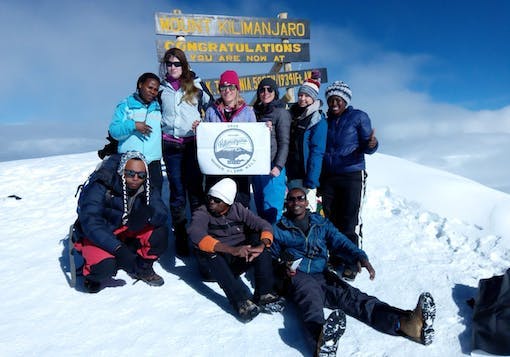Sustainable Kilimanjaro Climbs: Choosing the Best Route

29
Feb
Sustainable Kilimanjaro Climbs: Choosing the Best Route
When preparing for sustainable Kilimanjaro climbs, travelers are tasked with choosing the best route for a safe, memorable, and environmentally conscious journey.
Mt. Kilimanjaro, in Tanzania, is the tallest mountain in Africa and has a beloved nickname of "the Rooftop of Africa". This dormant volcano is called Mt. Kili for short, and its namesake Kilimanjaro National Park attracts tens of thousands of visitors annually. During the 2022/2023 season, the park welcomed 47,000 tourists, nearly reaching its pre-Covid levels, yet still 10,000 people below its peak (pun intended) year of visitors in the 2011/2012 season.
While Kilimanjaro National Park offers other activities including paragliding, crater camping, waterfall day hikes, mountain biking, and technical climbing, climbing Kili is the most popular draw.
This blog post will cover:
- A Brief History of Climbing Mt. Kilimanjaro
- What Makes Climbing Kili Unique and Special
- A Breakdown of Mt. Kilimanjaro's Routes
- How To and Why Choose a Responsible Climbing Company

A Brief History of Climbing Mt. Kilimanjaro
Mt. Kilimanjaro has summoned adventurous travelers since 1848, which is when the very first attempt of the mountain was recorded. The summit eluded climbers until October 6th, 1889 when Dr. Hans Heinrich Joseph Meyer and Ludwind Purtschelle successfully summited thanks to their leading guide, Yohani Kinyala Lauwo. Lauwo was the first Tanzanian and African to reach the peak of Mt. Kilimanjaro!
Before Covid, tourism contributed over 10% to Tanzania's GDP, and over the last 10 years, tourism from the Tanzanian National Parks has generated over $225 million from almost 470K visitors, of which, Kilimanjaro climbs and climbers are significant contributors.
This means that still today, in addition to being an epic, bucket-list adventure for many, climbing Kili is an important element of Tanzania tourism and their local economy.
What makes Climbing Kili Unique and Special
Mt. Kili is a Non-Technical Climb
Although "climbing" is the term used for Mt. Kilimanjaro, the first thing that makes climbing Kili is that it's not actually a technical route. This means you don't need alpine mountaineering experience, crampons, ice picks, or other intensive mountain climbing gear. As such, Mt. Kilimanjaro is one of the most, if not the most, accessible of the "Seven Summits" - the collection of mountains that are the highest on each of the respective continents.
The Seven Summits always include:
- Everest (8,848 m) in Nepal, Asia
- Aconcagua (6,961 m) in Argentina, South America
- Denali (6,194 m) in Alaska, USA, North America
- Kilimanjaro (5,895 m) in Tanzania, Africa
- Vinson (4,892 m) in Antarctica
The last two of the Seven Summits depend slightly on how tectonic borders and mountain ranges are considered. For Europe, it's between Elbrus (5,642 m) in Russia and Mont Blanc (4,810 m) in France and Italy. For Oceania, it's between Kosciuszko (2,228 m) in Australia and Puncak Jaya (4,884 m) on the island of New Guinea.
The Unique Environments of Mt. Kili
The second thing that makes Mt. Kilimanjaro so special is the diverse ecological zones climbers experience. Beginning in tropical rainforests and ending at the arctic summit, climbers pass through a heath and moorland zone, and an alpine desert zone.
- In the tropical rainforest zone (up to 2,800 m), expect to see lush vegetation, moss-covered trees, and abundant flora and fauna including over 3,000 plant species!
- In the heath and moorland zone (up to 4,000 m) the landscape changes. The trees and shrubs are shorter, lending to stunning, open views of the surrounding plains. Plant life also changes here to adapt to the different temperate zone.
- Next, the alpine desert zone (up to 5,000 m) evolves to have sparse vegetation with sturdy plants that can survive in harsh conditions. The terrain becomes rocky and climbers will see unique geological formations.
- Last but not least, the arctic zone (5,000+ m) is barren and covered with snow and ice. Here, oxygen levels are noticeably lower and conditions are the most extreme.
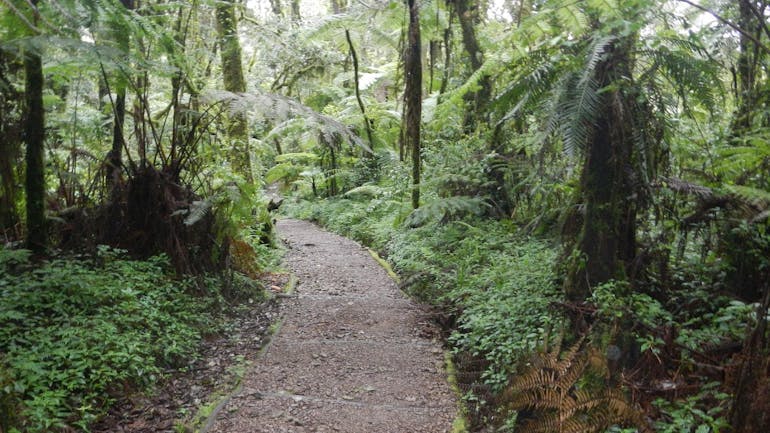
Summit Success & Safety
Kilimanjaro National Park has not released any recent statistics, and old data indicates success rates between about 30% and 90%. Most unofficial data though indicates relatively high summit success of around 70%-80%. The success rate depends on the route, climb duration, weather, and other factors - and safety is always paramount.
Companies tend to track summit success on their own. Ask the company you want to climb with about their specific success rates for the route you are interested in, as well as what else they do to ensure climbers' safety.
Kilimanjaro's altitude gain is relatively rapid, which can make it challenging for acclimatization. This is the main reason why it's suggested to spend at least five days climbing Mt. Kilimanjaro. Generally, the longer the duration of your climbing days, the higher the chance of success will be. In other words, climbs attempted in only 5-6 days have lower success rates than climbs attempted over 8-9 days. The extra days give you both time to rest and to acclimatize slower.
Your guides and porters should carry some emergency and safety equipment with them, including a pulse oximeter to test your blood oxygen levels every day.
Travel insurance is also strongly encouraged, if not required, by climbing companies. We recommend World Nomads, which specifically offers insurance for 6,000+ m, as required by many Kili climb operators.
A Breakdown of Mt. Kilimanjaro's Routes
Originally, there was only one route for ascending and descending Mt. Kilimanjaro - the Marangu "Coca-Cola" Route. Today, there are eight main routes:
- Six routes are exclusively for ascending (Machame, Lemosho, Northern Circuit, Rongai, Umbwe, Shira Londorosi)
- One route is exclusively for descending (Mweka)
- One route is for both ascending and descending (Marangu)
When choosing a route, consider the duration, success rates, difficulty, scenery, accommodations, and crowds.
As mentioned in the Summit Success & Safety section, climbs with a longer duration allow for more acclimatization time which can contribute to higher summit success rates.
The routes are considered "Mildly Strenuous" and physical preparation is strongly suggested. Longer routes may feel easier as you're trekking at a slower pace and not gaining elevation as quickly.
Each route will offer unique landscapes, but overall the views will be beautiful and range from 'very good' to 'excellent' regardless of route! There is some more variability when it comes to accommodations - namely if you prefer a more comfortable climb staying in mountain huts along the way, or a more rugged climb staying in tents.
Crowds are the last element to consider carefully. The popular routes are popular for a reason, but less-trafficked routes will provide a more serene, peaceful climb.
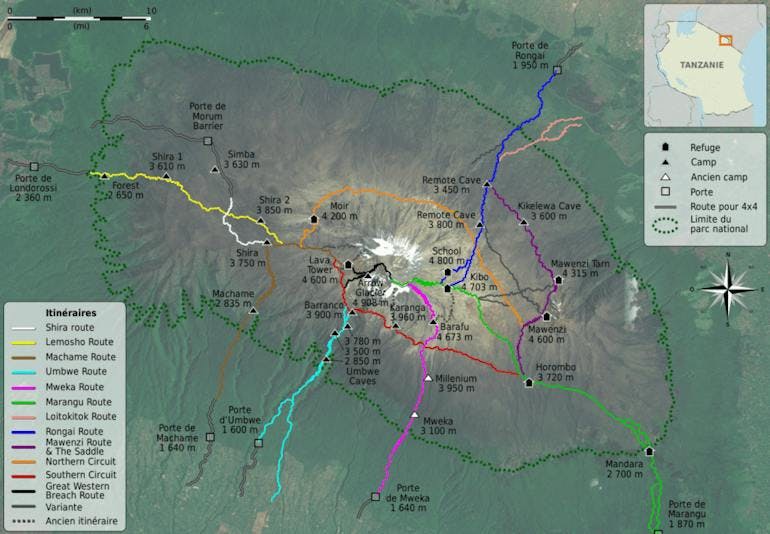
1. Marangu "Coca-Cola" Route
The Marangu Route is the original Kilimanjaro summit path. It's a popular route and the only one with hut accommodations. Several other routes eventually feed into or shoot off of the Marangu Route: Rongai, Umbwe, and Lemosho for ascending routes, and Mweka (the other descending route).
We don't recommend this route unless you are both short on time and highly physically prepared for the climb. The shorter route makes it harder for climbers to acclimatize to and has a correspondingly lower success rate. Yet, there is still high traffic from climbers trying to do this journey quickly.
2. Machame "Whiskey" Route
The Machame Route was established in 1977, born out of a need to relieve foot traffic from the Marangu Route. Known for its excellent scenery, it quickly rose in popularity and is today, somewhat ironically, the most utilized climbing route with around 40% of Kili climbers choosing this path.
Because this trail has become so crowded, we strongly suggest considering one of the alternate routes for a more enjoyable experience. This can also help prevent over-tourism along the route.
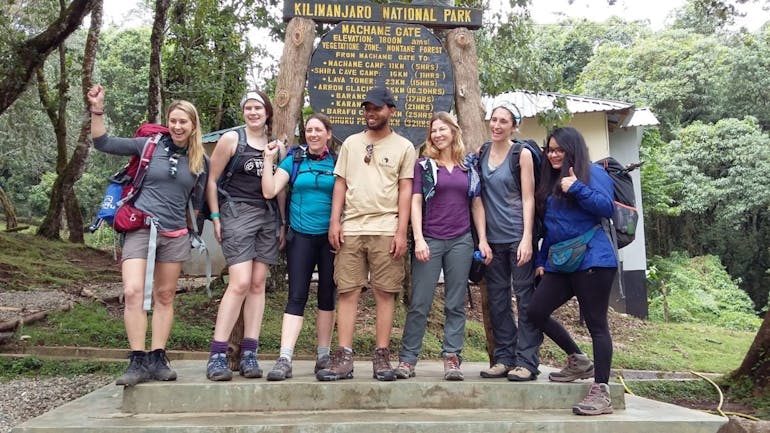
3. Lemosho Route
The Lemosho Route is a lovely option for climbers wishing to travel at a more leisurely pace with more time to acclimatize. It's one of the longer routes and starts from the west before sweeping along the Southern Circuit. The Lemosho Route is known for its scenic beauty and panoramic views, a beautiful crossing of the Shira Plateau, more secluded campsites, and high success rates. Combined with the Shira Londorosi Route, which merges with Lemosho after the 1st day, this trail attracts 18% of climbers.
We love this route! It's a great mid-length duration and combines less traffic with high success rates and captivating views.
4. Northern Circuit Route
The Northern Circuit Route is the newest addition, and it's a sort of sister route to the Lemosho Route. It is the longest route and takes climbers from the east, over the north side, and then to the west side of Kili in a more gradual ascent. This unique, panoramic route is ideal for climbers seeking to optimize for comfort and difficulty by allowing more time to acclimatize.
Boasting a very high success rate, fantastic scenery, and less-crowded trails, this is our other top pick!
5. Rongai Route
The Rongai Route is the only route that approaches Kili directly from the north, meaning the scenery and views will be unique compared to the other routes. Catering to about 12% of climbers, this is a more remote, less crowded route.
This route is a great choice for those looking for something more serene and off-the-beaten-path, and looking to go slightly faster than Lemosho or Northern Circuit.

6. Umbwe Route
The Umbwe Route is regarded as the most challenging and only draws around 2% of climbers. The route takes a more direct path and the summit ascent, through dense forest, is particularly steep and lacks the sweeping panoramic views and diverse landscapes of some of the other routes.
This route is suitable for experienced climbers seeking a more secluded and rugged experience.
7. Shira Londorosi Route
The Shira Route merges with the Lemosho Route after the first day, so there are minimal, yet notable, differences. The Shira Route (which was in use before Lemosho), has a higher starting altitude that completely bypasses the tropical rainforest zone. This means climbers can have a harder time acclimatizing.
The Shira Route is so similar to the Lemosho Route that unless you're trying to essentially do the Lemosho Route in less time, we advise opting for the full Lemosho Route.

Courtesy of United Republic of Tanzania
Which Kilimanjaro Route is Best for You?
To choose the best route for you, consider your physical fitness, altitude tolerance, and personal preferences for crowds, scenery, and accommodation. Especially since the dream of climbers is to reach the Roof of Africa, it's essential to strike a balance between a route that allows for proper acclimatization and one that offers a manageable level of difficulty.
For scenery, safety, and probability of summit success, our top two picks are the Lemosho Route and the Northern Circuit Route. These are also our top picks in terms of sustainability:
- They avoid the most popular routes, thereby helping to combat overtourism. Note that the Lemosho Route is gaining in popularity and the Northern Circuit will have less trail traffic than Lemosho.
- They allow for slower travel, providing a more immersive and less rushed experience.
How to and Why Choose a Responsible Climbing Company
Myriad companies offer Kili climbs, which makes choosing a sustainable company all the more important! Whenever there are a plethora of similar options (in this case, climbing Mt. Kilimanjaro along pre-determined routes with guides and porters), we strongly urge travelers to let sustainability be a differentiating factor in who they book their adventure with.
[Yugen Earthside] assisted me in finding the perfect Kilimanjaro climb and safari! The trip was everything we dreamed of. Guides and Porters were amazing and friendly and helped us make it to the top as well as see every African animal!Kris B. about the 8-day Lemosho Route + 4-day Safari
6 Questions to Ask your Kili Climb Company for Sustainability
- Is the climb provider a locally owned, Tanzanian company with Tanzanian guides and porters?
- Do they offer and promote the less trafficked routes?
- Do they limit their climb group sizes?
- Is the company a member of the Kilimanjaro Porters Assistance Project? KPAP is a third-party organization that audits and advocates for fair treatment and payment of guides and porters.
- Does the company require insurance, and put the safety of their clients first?
- Does the company do anything above and beyond offering Kili climbs to give back to their local community or the environment?
Our Local Partner
At Yugen Earthside, we are proud to partner with a locally-owned Tanzanian company offering Kili Climbs. We advise travelers to opt for the Lemosho and Northern Circuit routes (though we also offer the Machame Route, and especially recommend this for our unique Women-Only Kili climb!). All our Small-Group climbs have a maximum of 12 travelers, though frequently the groups are even smaller. Travel insurance for 6,000+ m is mandatory and a certificate of proof will be required.
Our local partner has created around 400 jobs for locals and takes some wonderful sustainability actions. Not only are they a member of KPAP, they also are a member of Carbon Offsetting Tanzania and offer carbon offsetting for every traveler - this is in addition to the automatic carbon removal contributions Yugen Earthside makes on behalf of each traveler who books through us.
Some other incredible actions our partner takes include mandatory Leave No Trace training for all staff, and profit sharing with the local community in Moshi (supporting disabled children, helping to fund the building of schools, and providing one Moshi child with health insurance for 1 year for every client).
One More Sustainability Tip for Climbing Kili
The last tip for sustainably climbing Mt. Kilimanjaro is to add on other experiences in Tanzania to your visit. The classic addition is to go on a relaxing and rewarding safari after your summit attempt! Another fun option is to head to the Tanzania's nearby island of Zanzibar for some sun and beach time.
Extending your stay further promotes the principles of slow tourism, whereby you get to see more of the diversity that a destination has to offer, and at a relaxed pace.
Ready for Your Sustainable Kili Climb?
If you're ready to book your sustainable Mt. Kilimanjaro climb, or if you have more questions about the routes, contact us. Whether you're looking to join a fixed departure journey with other climbers, or want to privatize a climb uniquely for your group, we can help. And, we're here to chat about safari or Zanzibar add-on options as well!
No matter what: We urge you to book your Kili climb with a company truly committed to responsible environmental, economic, and social practices so that you can use your climb for good - and have a safe, and memorable experience!
